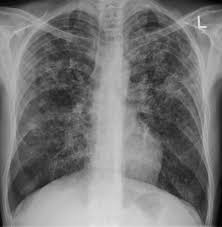In a groundbreaking study, Australian researchers have uncovered the reason behind the side effects associated with mRNA vaccines, such as headaches, fevers, and fatigue. This discovery, hailed as a major breakthrough, could enhance the safety and efficacy of future vaccines.
The study, conducted by Melbourne’s Peter Doherty Institute for Infection and Immunity in collaboration with RMIT University, provides the first in-depth analysis of how mRNA vaccines circulate and break down in the human bloodstream. Published on Thursday, the research highlights why certain individuals experience side effects following mRNA-based COVID-19 vaccinations.
Using blood samples from 19 individuals over a 28-day period after receiving an mRNA COVID-19 booster, researchers analyzed 156 samples to determine how the vaccines behave in the body. While mRNA vaccines are primarily designed to remain in the lymph nodes, where they trigger the immune system to produce protective antibodies, the study found that in some cases, a tiny amount of the vaccine enters the bloodstream.
“The extent to which the vaccine enters the bloodstream varies between individuals, which may explain some of the side effects such as fever, headache, and fatigue reported after vaccination,” said Yi Ju, co-author of the study from RMIT University’s School of Science.
This variation in vaccine presence in the bloodstream can activate inflammatory responses in the body, leading to side effects in certain individuals. This revelation is critical in understanding how mRNA vaccines work and in explaining why side effects differ from person to person.
mRNA vaccines, first introduced for COVID-19 in 2020, use genetic instructions to prompt the body to produce a protein that elicits an immune response, rather than relying on a weakened or inactivated virus. Since their approval, mRNA technology has been extended to develop vaccines and treatments for other diseases, including cancer.
The study’s authors emphasized that their findings will help guide improvements in mRNA vaccine technology, making vaccines safer and potentially more effective in the future. By minimizing the amount of vaccine that enters the bloodstream, future formulations could reduce the likelihood of side effects while maintaining the immune response needed to fight infections.
This research marks a significant step toward optimizing the benefits of mRNA vaccines while addressing concerns about their side effects, potentially leading to advancements not only in COVID-19 vaccines but in the broader use of mRNA-based treatments.










